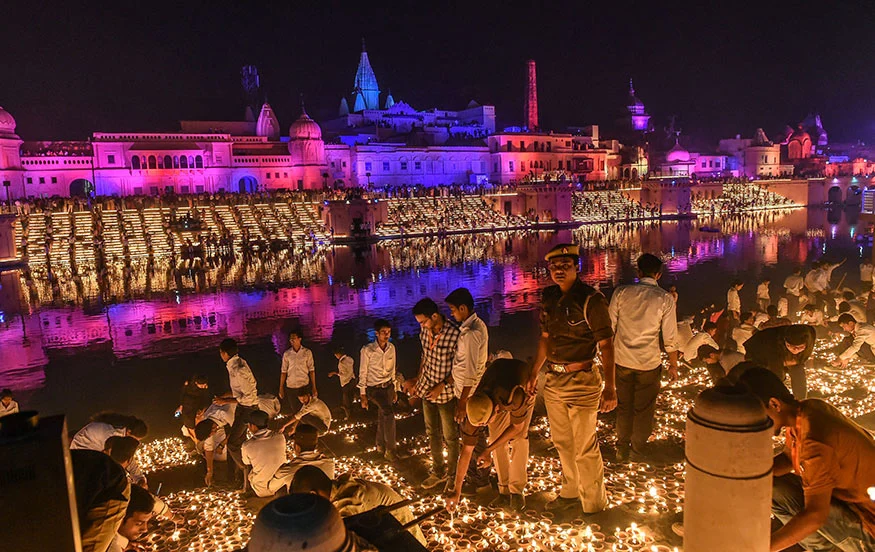Table of Contents:
- Introduction to Mughal Architecture in Ayodhya
- Notable Mughal-Era Structures in Ayodhya
- Architectural Features and Styles
- The Cultural and Historical Significance
- Exploring Beyond the Architecture
- Preservation and Restoration Efforts
- Planning Your Visit
- FAQs for Travelers
1. Introduction to Mughal Architecture in Ayodhya
Ayodhya, a city with an intricate tapestry of history, is not only significant for its ancient Hindu temples but also for its Mughal-era architectural wonders. The Mughal period left an indelible mark on Ayodhya’s landscape, with various structures that showcase the rich architectural heritage of this era. Exploring these sites provides a unique perspective on the city’s historical narrative.
- Ayodhya hosts significant Mughal-era architectural sites.
- These structures showcase the city’s rich historical narrative.
2. Notable Mughal-Era Structures in Ayodhya
Among the Mughal-era structures in Ayodhya, certain landmarks stand out for their historical and architectural significance. These include the Gulab Bari and the Mausoleum of Bahu Begum, which are known for their stunning designs and intricate craftsmanship. These structures not only exemplify Mughal architecture but also tell stories of the era’s rulers and their influence on the city.
- Key sites include Gulab Bari and the Mausoleum of Bahu Begum.
- These structures exemplify Mughal architectural design and craftsmanship.
3. Architectural Features and Styles
Mughal architecture in Ayodhya is characterized by intricate carvings, domed structures, and expansive gardens. These features reflect the Mughal emphasis on symmetry, geometric designs, and the integration of nature with architecture. The use of red sandstone and marble is also prominent in these structures, adding to their grandeur and elegance.
- Features intricate carvings, domes, and expansive gardens.
- Emphasizes symmetry, geometric designs, and the integration of nature.
4. The Cultural and Historical Significance
Mughal-era architecture in Ayodhya is not just an aesthetic marvel; it’s a testament to the cultural and historical confluence that shaped the city. These structures are symbolic of the times when different cultures and religions coexisted and influenced each other, adding layers to Ayodhya’s historical and cultural identity.
- Symbolizes the cultural and historical confluence in Ayodhya.
- Reflects the coexistence and influence of diverse cultures and religions.
5. Exploring Beyond the Architecture
A visit to Ayodhya’s Mughal-era sites is more than just an architectural tour; it’s an opportunity to delve into the stories and history behind these buildings. Visitors can explore the gardens, walk through the corridors, and imagine the life and events that these walls have witnessed. This exploration provides a deeper understanding of the Mughal period’s impact on Ayodhya.
- Offers a chance to delve into the stories and history behind the buildings.
- Allows visitors to imagine the historical events witnessed by these structures.
6. Preservation and Restoration Efforts
The preservation of Mughal-era architecture in Ayodhya is crucial for maintaining the city’s historical integrity. Various restoration efforts have been undertaken to preserve these structures for future generations. These efforts ensure that the architectural
brilliance and historical significance of these sites are not lost to time. Visitors can witness the ongoing work to maintain and restore these buildings, reflecting a commitment to preserving Ayodhya’s diverse cultural heritage.
- Preservation efforts are crucial for maintaining Ayodhya’s historical integrity.
- Restoration work reflects a commitment to preserving the city’s cultural heritage.
7. Planning Your Visit
When planning a visit to Ayodhya’s Mughal-era sites, it’s important to consider factors like timing, weather, and local guides. Early mornings or late afternoons are ideal times to visit, avoiding the midday heat. Engaging a knowledgeable local guide can enrich the experience, providing insights into the historical and cultural context of the sites.
- Consider visiting in the early morning or late afternoon.
- Engaging a local guide can provide deeper historical and cultural insights.
8. FAQs for Travelers
- What are some notable Mughal-era structures in Ayodhya?
- Gulab Bari and the Mausoleum of Bahu Begum are key examples.
- Is there an entry fee for these sites?
- This varies by site; some may have a nominal entry fee.
- How much time should I allocate for visiting Mughal-era sites?
- Allocate at least half a day to explore these sites thoroughly.
- Are guided tours available for these architectural sites?
- Yes, guided tours are available and recommended for a comprehensive experience.
- Can I take photographs at these sites?
- Photography is generally allowed, but check for specific restrictions at each site.
- What should I wear when visiting these sites?
- Modest and comfortable attire is recommended, suitable for walking and respecting cultural norms.
- Are there facilities like restrooms and eateries near these sites?
- Facilities may be limited; it’s advisable to plan accordingly.
- Can I buy souvenirs near these Mughal-era sites?
- Local vendors near these sites often sell souvenirs and handicrafts.
Conclusion: Ayodhya’s Mughal-era architecture offers a fascinating glimpse into a period that significantly shaped the city’s cultural and historical landscape. These architectural marvels are not just monuments of the past but living narratives that tell stories of artistic excellence, cultural confluence, and historical events. A visit to these sites is a journey through time, offering insights into the rich tapestry of Ayodhya’s history and a testament to the enduring legacy of its architectural heritage.
- Ayodhya’s Mughal-era architecture is a testament to the city’s rich historical and cultural legacy.
- A visit to these sites is a journey through the artistic and historical narrative of Ayodhya.


